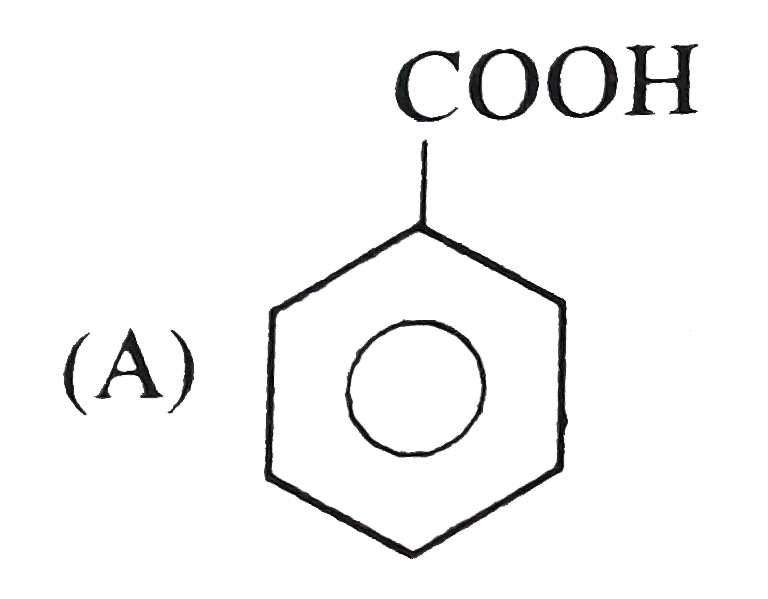The acid having the highest pKA value among the following is
HCOOH
CH3COOH
CICH2COOH
FCH2COOH
The correct Answer is:B
To determine which acid has the highest pKa value among the given options, we need to understand the relationship between the acid dissociation constant (Ka) and pKa. The pKa is defined as:
pKa=−log10(Ka)
1. Understanding pKa and Ka:
- A higher pKa value indicates a weaker acid, as it corresponds to a lower Ka value. Conversely, a lower pKa indicates a stronger acid with a higher Ka.
2. Identifying the Acids:
- The acids given in the question are:
- Formic acid (HCOOH)
- Acetic acid (CH3COOH)
- Chloroacetic acid (ClCH2COOH)
- Fluoroacetic acid (FCH2COOH)
3. Analyzing the Acids:
- Formic acid (HCOOH): This is a simple carboxylic acid without any electron-withdrawing or donating groups.
- Acetic acid (CH3COOH): Contains a methyl group (CH3) which has a +I (positive inductive) effect, making it a weaker acid.
- Chloroacetic acid (ClCH2COOH): The chlorine atom is electronegative and exerts a -I (negative inductive) effect, stabilizing the carboxylate ion (CH2COO-), making it a stronger acid than acetic acid.
- Fluoroacetic acid (FCH2COOH): Fluorine is even more electronegative than chlorine, resulting in a stronger -I effect, which stabilizes the carboxylate ion even more than chloroacetic acid, making it the strongest acid among the four.
4. Comparing Acid Strength:
- The strength of the acids can be ranked based on the stability of their conjugate bases (carboxylate ions):
- Fluoroacetic acid (strongest acid, lowest pKa)
- Chloroacetic acid
- Formic acid
- Acetic acid (weakest acid, highest pKa)
5. Conclusion:
- Since acetic acid (CH3COOH) is the weakest acid among the options provided, it will have the highest pKa value.
Thus, the acid with the highest pKa value is Acetic acid (CH3COOH).
- A higher pKa value indicates a weaker acid, as it corresponds to a lower Ka value. Conversely, a lower pKa indicates a stronger acid with a higher Ka.
- The acids given in the question are:
- Formic acid (HCOOH)
- Acetic acid (CH3COOH)
- Chloroacetic acid (ClCH2COOH)
- Fluoroacetic acid (FCH2COOH)
- Formic acid (HCOOH): This is a simple carboxylic acid without any electron-withdrawing or donating groups.
- Acetic acid (CH3COOH): Contains a methyl group (CH3) which has a +I (positive inductive) effect, making it a weaker acid.
- Chloroacetic acid (ClCH2COOH): The chlorine atom is electronegative and exerts a -I (negative inductive) effect, stabilizing the carboxylate ion (CH2COO-), making it a stronger acid than acetic acid.
- Fluoroacetic acid (FCH2COOH): Fluorine is even more electronegative than chlorine, resulting in a stronger -I effect, which stabilizes the carboxylate ion even more than chloroacetic acid, making it the strongest acid among the four.
- The strength of the acids can be ranked based on the stability of their conjugate bases (carboxylate ions):
- Fluoroacetic acid (strongest acid, lowest pKa)
- Chloroacetic acid
- Formic acid
- Acetic acid (weakest acid, highest pKa)
- Since acetic acid (CH3COOH) is the weakest acid among the options provided, it will have the highest pKa value.
Similar Questions
Knowledge Check
which has the highest pKa value ?
A B
B C
C D
D
Which has the highest pKb value?
AR3C−NH2BR2NHCRNH2DNH3Which has highest pKb value?
AR3C−NH2BR2NHCRNH2DNH3
The order of pKa values of the following acids is

View SolutionWhich fuel has the highest calorific value from among the following?
View SolutionWhich fuel has the highest calorific value from among the following?
View SolutionThe correct pKa order of the following acids is :

View SolutionpKa value of the strongest acid among the following is
View Solution
